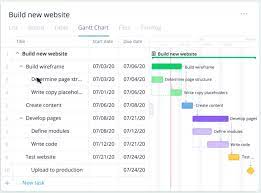Optimising Workflows: The Essential Role of a Project Management System
Project Management System: Streamlining Workflows and Enhancing Productivity
In today’s fast-paced business environment, effective project management is crucial for the success of any organisation. A project management system is a powerful tool that helps teams plan, execute, and monitor projects efficiently.
One of the key benefits of a project management system is its ability to centralise project-related information. By providing a unified platform for collaboration, communication, and task management, team members can easily access important documents, track progress, and stay updated on project timelines.
Furthermore, project management systems offer features such as task assignment, milestone tracking, Gantt charts, and resource allocation tools. These functionalities enable project managers to allocate resources effectively, identify bottlenecks in workflows, and make informed decisions to keep projects on track.
Collaboration is at the core of successful project delivery. Project management systems facilitate seamless communication among team members through features like real-time messaging, file sharing capabilities, and comment threads. This fosters transparency and accountability within the team.
Moreover, project management systems provide valuable insights through reporting and analytics tools. By generating customised reports on key performance indicators (KPIs) and progress metrics, stakeholders can gain a comprehensive overview of project status and make data-driven decisions to drive success.
Security is another essential aspect of project management systems. With data encryption protocols, user permissions settings, and secure cloud storage options, organisations can ensure that sensitive information remains protected throughout the project lifecycle.
In conclusion, a robust project management system is an indispensable asset for modern businesses seeking to streamline workflows, enhance productivity, and achieve successful project outcomes. By leveraging the capabilities of a comprehensive project management solution, organisations can optimise their operations and deliver results that exceed expectations.
“Navigating the Lifecycle: The Five Stages of Project Management”
3. “The Keystone of Success: Understanding the Importance of Project Management Systems
- What are the 5 core components of project management?
- What are the five 5 stages of project management?
- Why is project management system important?
- What is a project management system?
What are the 5 core components of project management?
In the realm of project management, understanding the five core components is essential for successful project delivery. These components encompass initiation, planning, execution, monitoring and controlling, and closing. Initiation involves defining the project’s purpose and scope, setting objectives, and identifying key stakeholders. Planning entails creating a detailed roadmap outlining tasks, timelines, resources, and potential risks. Execution involves putting the plan into action by coordinating resources, tasks, and team members. Monitoring and controlling focus on tracking progress, managing changes, and ensuring adherence to the project plan. Finally, closing involves formalising project completion, evaluating outcomes, and capturing lessons learned for future projects. Embracing these core components is fundamental to effective project management practices.
What are the five 5 stages of project management?
In project management, the five stages form the foundation for successful project delivery. These stages are initiation, planning, execution, monitoring and controlling, and closure. During the initiation phase, project objectives and scope are defined, and stakeholders’ expectations are identified. The planning stage involves creating a detailed project plan that outlines tasks, resources, timelines, and budgets. Execution is where the actual work of the project takes place according to the plan. Monitoring and controlling ensure that the project stays on track by tracking progress, managing risks, and making adjustments as needed. Finally, closure involves completing all project activities, obtaining client approval, and transitioning deliverables to stakeholders. These five stages provide a structured framework for managing projects effectively from start to finish.
Why is project management system important?
A project management system is crucial for organisations due to its ability to streamline workflows, enhance collaboration, and ensure project success. By providing a centralised platform for planning, tracking, and monitoring projects, it enables teams to allocate resources efficiently, set clear objectives, and manage timelines effectively. The system promotes transparency and accountability among team members through features like task assignment and progress tracking. Additionally, project management systems offer valuable insights through reporting tools, enabling stakeholders to make informed decisions based on real-time data. Ultimately, the importance of a project management system lies in its capacity to improve productivity, mitigate risks, and drive successful project outcomes in today’s dynamic business landscape.
What is a project management system?
A project management system is a comprehensive software tool designed to streamline and facilitate the planning, execution, and monitoring of projects within an organisation. It serves as a centralised platform that enables teams to collaborate, assign tasks, track progress, manage resources, and communicate effectively throughout the project lifecycle. By providing a structured framework for project management activities, a project management system enhances efficiency, transparency, and accountability within teams, ultimately leading to successful project outcomes.




